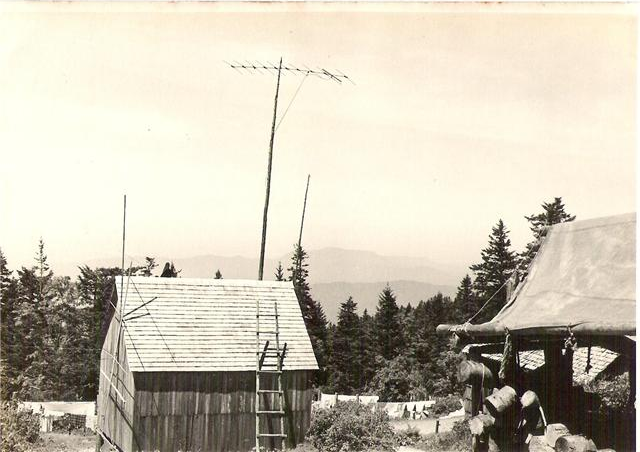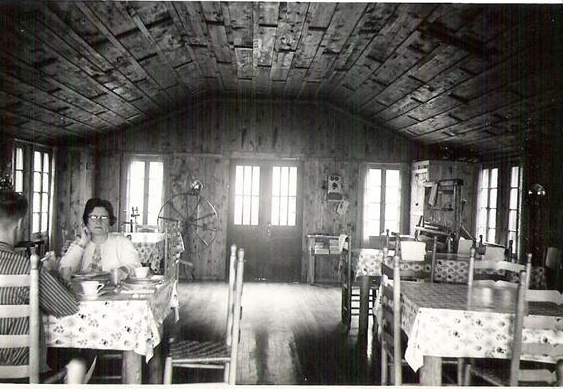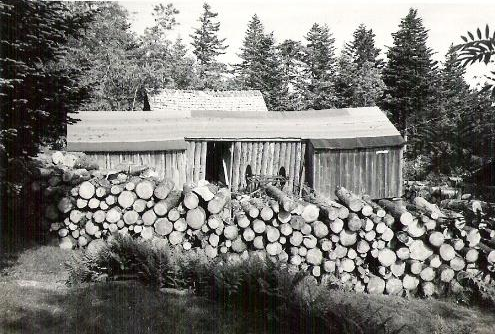Ken Attenhofer's Photos;
Page Six
More photos of some of the buildings at LeConte Lodge, circa 1960's.

"The Shack" and Crew Living Quarters
Herrick Brown -- "Brownie" -- and his wife Myrtle owned LeConte Lodge -- they purchased it from the original owner Jack Huff in the late 1950's. Brownie was an amateur radio operator; his call sign was W4ZZ. Because the Lodge was located on top of a mountain at almost 6,500 feet elevation, it made a great radio operating location. Brownie had a small amateur radio station set up in this cabin, which also served as crew bunkhouse. There were two double beds, bunked -- sleeping accommodations for four; a wood-burning stove; a kettle for heating water; couple of tables, four chairs, and a chest of drawers with four drawers . . . one for each of us. Our light was a Coleman lantern and a couple of kerosene lamps; heat was a wood-burning stove.

The Dining Room
Inside the LeConte Lodge dining room. The lady is Viola Matthews who worked as cook at the Lodge off and on in the 1960's. Her husband Amos was the "pack man" who brought supplies up and down the mountain on horses. In the far right corner of this photo is an old hand loom that was used to weave cloth. In the summer of 1963, Myrtle Brown taught me to weave and I wove curtains for 2 ( 3? ) of the small cabins on this loom. Next to the door is an old crank telephone. This phone really worked. It was connected by a single wire to a similar phone in the barn at Cherokee Orchard and the foot of Mt. LeConte. We used this phone to communicate with Amos, the pack man.

Woodshed
At the Lodge in the 1960's, we cooked and heated with wood fires -- fireplaces in the Old and New Lodges; small wood stoves in the six cabins, the family quarters, and the crew quarters; and, two wood-burning cook stoves in the kitchen.
Because the Lodge was located inside the Great Smoky Mountains National Park, we could not cut live trees. The Park Service permitted us to cut trees that had blown down in storms or otherwise fallen. Most of the wood was soft wood, spruce and hemlock. These softwoods burned fast and did not have much heat content, thus, we had to stock a lot of wood. In this photo are logs that we would cut into stove-wood lengths -- about 18-inches long -- then we would split these into sticks of wood to be burned in the stoves.
| Back to page one of Ken's photos |
| Back to page two of Ken's photos |
| Back to page three of Ken's photos |
| Back to page four of Ken's photos |
| Back to page five of Ken's photos |
| Forward to page seven of Ken's photos |